- Home
- Larry McMurtry
Oh What a Slaughter
Oh What a Slaughter Read online
BY LARRY MCMURTRY
The Colonel and Little Missie
Loop Group
Folly and Glory
By Sorrow’s River
The Wandering Hill
Sin Killer
Sacagawea’s Nickname: Essays on the American West
Paradise
Boone’s Lick
Roads
Still Wild: A Collection of Western Stories
Walter Benjamin at the Dairy Queen
Duane’s Depressed
Crazy Horse
Comanche Moon
Dead Man’s Walk
The Late Child
Streets of Laredo
The Evening Star
Buffalo Girls
Some Can Whistle
Anything for Billy
Film Flam: Essays on Hollywood
Texasville
Lonesome Dove
The Desert Rose
Cadillac Jack
Somebody’s Darling
Terms of Endearment
All My Friends Are Going to Be Strangers
Moving On
The Last Picture Show
In a Narrow Grave: Essays on Texas
Leaving Cheyenne
Horseman, Pass By
BY LARRY MCMURTRY AND DIANA OSSANA
Pretty Boy Floyd
Zeke and Ned
LARRY
McMURTRY
OH WHAT A
SLAUGHTER
Massacres in the American West 1846-1890
SIMON & SCHUSTER
Rockefeller Center
1230 Avenue of the Americas
New York, NY 10020
www.SimonandSchuster.com
Copyright © 2005 by Larry McMurtry
All rights reserved,
including the right of reproduction
in whole or in part in any form.
SIMON & SCHUSTER and colophon are registered trademarks of Simon & Schuster, Inc
For information about special discounts for bulk purchases,
please contact Simon & Schuster Special Sales at
1-800-456-6798 or [email protected]
Designed by Karolina Harris
Photography consultant: Kevin Kwan
Manufactured in the United States of America
10 9 8 7 6 5 4 3 2 1
Library of Congress Cataloging-in-Publication Data
McMurtry, Larry.
Oh what a slaughter: massacres in the American West, 1846–1890 / Larry McMurtry.
p. cm.
Includes bibliographical references and index.
1. Indians of North America—Wars—West (U.S.) 2. Indians of North America—West (U.S.)—History—19th century. 3. Massacres—West (U.S.)—History—19th century. I. Title.
E78.W5M35 2005
978'.02—dc22 2005051849
ISBN-13: 978-0-7432-5077-1
eISBN-13: 978-1-4391-4149-6
ISBN:10: 0-7432-5077-X
Photo credits will be found on page 177.
Contents
The Meat Shop
The Vulnerable Pioneer
The Big Massacres and Some Others
The Moral Taint
Did Kit Regret?
Counts
Images, Heroes, Stars
The Sacramento River Massacre, Spring 1846
The Mountain Meadows Massacre, September 11, 1857
Mountain Meadows (II)
Sand Creek, November 29, 1864
The Marias River Massacre, January 23, 1870
The Camp Grant Massacre, April 30, 1871
The Broken Hoop: 1871-1890
Wounded Knee, December 29, 1890
Wounded Knee (II)
Wounded Knee (III)
The Waning Moon
Bibliographical Note
Index
Comes the most heartrending tale of all. As I have said Before General Custer with five companies went below the village to cut them off as he supposed but instead he was surrounded and all of them killed to a man 14 officers and 250 men There the bravest general of modder times met his death with his two brothers, brotherinlaw and nephew not 5 yards apart, surrounded by 42 men of E Company. Oh what a slaughter how many homes made desolate by the sad disaster everyone of them were scalped and otherwise mutilated but the General he lay with a smile on his face.
PRIVATE THOMAS COLEMAN
I Buried Custer
OH WHAT A
SLAUGHTER
The Meat Shop
Of “massacre” (the noun) the OED suggests “shambles, butchery, general slaughter, carnage,” a definition that would probably work for the great scout Kit Carson, who called the 1846 massacre of an undetermined number of California Indians, in which he took part, “a perfect butchery.”
Of “massacre” (the verb) the same authority offers “to violently kill, mutilate, mangle,” a fair description of what was done to the victims in the course of the various massacres I intend to consider in this book.
The Encyclopaedia Britannica, eleventh edition, allots the subject a hasty paragraph, concluding that—though the word is very obscure—the etymology suggests something like a meat shop: a very bloody place, a shambles, with discarded and undesirable pieces of meat scattered around.
The image of a meat shop seems apt to me, since what massacres usually do is reduce human beings to the condition of meat, though the bits of meat will be less tidily arranged than the cuts would normally be in a decent butcher shop.
If we know anything about man, it’s that he’s not pacific. The temptation to butcher anyone considered undesirable seems to be a common temptation, not always resisted. The twentieth century, just passed, more or less began with the million-plus massacre of the Armenians by the Turks, and ended with the terrible low-tech chopping up of some 800,000 Tutsis in Rwanda, an old-style massacre mostly accomplished with hoes and hatchets. When it ended a good deal of Rwanda resembled a meat shop.
What I want to do in this book is look at several massacres that occurred in the American West during the several decades when the native tribes of our plains and deserts were being displaced from their traditional territories by a vast influx of white immigrants. This process began in the 1830s, but accelerated sharply in the 1840s and 1850s: it was mostly completed, insofar as the native tribes were concerned, by 1890.
Judged by world-historical perspectives these massacres were tiny. The Custer defeat in 1876, a military encounter that, to the great surprise of the general who was soon to lie dead with a smile on his face, was the only one of these encounters to involve more than two hundred dead, a figure hardly to be counted among the world’s huge cruelties. Though I describe here and there some tiny massacres, involving only a handful of people, I am mainly concerned with the famous massacres, with death tolls over one hundred people.
But it should be remembered that the body count in the six massacres I’m especially interested in still adds up to fewer than one thousand people, barely one-third of the number who died in New York and Washington on September 11, 2001.
But places and contexts differ: in the thinly populated West of the nineteenth century the violent extinction of more than one hundred people was no light thing, though a few of the assailants at first pretended that it was. Massacres are not like vast natural disasters: the Galveston Flood, the San Francisco Earthquake, the eruption of Krakatoa.
Massacres require human volition, and the extremes that result not infrequently produce trauma and, sometimes, guilt. Though in most cases the men who did the killings I describe escaped legal retribution, they did not escape the trauma that followed on the terror they inflicted.
Nephi Johnson, one of the participants in the Mountain Meadows Massacre, died crying “
Blood, blood, blood!”
Nephi Johnson
Though more than a century has passed since Wounded Knee, the most recent of these massacres, bitterness has yet to leach out of the descendants of those massacred. Very probably one of the reasons The Church of Jesus Christ of Latter-day Saints (the Mormons) continues to deny complicity in the Mountain Meadows Massacre—although an abundance of evidence makes clear that they led it—is because there are in Arkansas and elsewhere descendants of the 121 people killed on that September day in 1857. Many of those descendants might not be averse to suing this now very prosperous church.
I have visited all but one of these famous massacre sites—the Sacramento River Massacre of 1846 is so forgotten that its site near the northern California village of Vina can only be approximated. It is no surprise to report that none of the sites are exactly pleasant places to be, though the Camp Grant site north of Tucson does have a pretty community college nearby. In general, the taint that followed the terror still lingers, and is still powerful enough to affect locals who happen to live in the area. None of the massacres was effectively covered up, though the Sacramento River Massacre was overlooked for a very long time.
But the lesson, if it is a lesson, is that blood—in time, and, often, not that much time—will out. In case after case the dead have managed to assert a surprising potency.
* * *
J. P. Dunn
In 1886 the historian and journalist J. P. Dunn published a pioneering study of Western massacres. He called his book Massacres of the Mountains, though few of the massacres he described actually took place in mountainous country; none of those that I am concerned with do.
The 1864 massacre at Sand Creek, in eastern Colorado, occurred in vast and still almost empty plains country. Dunn’s book was a very popular account of the long and bloody war between whites and Indians (and, occasionally, Hispanics) during the long struggle for control of our Western lands. Dunn’s title was catchy and his material vivid, to say the least.
Though overwritten and overlong, Dunn’s book is a Black Book, of a sort that was only to become common after World War I. He had initially intended to stop his story in 1875, just before the Custer battle, but found that he could not resist following the Apache campaigns in the Southwest, which were still proceeding.
Nor, in the end, could he resist doing the Little Bighorn and the subsequent troubles with the Nez Percé and the Utes. Geronimo and his eighteen warriors didn’t surrender to General Nelson Miles until 1886, the year Dunn’s book was published.
The Ghost Dance troubles among the Dakota Sioux, Sitting Bull’s controversial death, and the final tragic slaughter at Wounded Knee Creek were still four years ahead. After 1890 there continued to be plenty of white-Indian conflict—The New York Times as recently as October 29, 2002, reported that there was yet again trouble at the Pine Ridge Agency in South Dakota, not far from where the Wounded Knee Massacre took place. Plenty of troubles there have been, but no more massacres on the one-hundred-victim scale.
Massacres of the Mountains is still in print; it remains interesting today not merely for what J. P. Dunn reported—often in prose more than a little purple-tinted, as we shall see—but also for what he himself felt about these bloody troubles. He knew well, and repeats over and over again, that the Indians were commonly the victims of massive and cruel injustices—systematic injustices at that. He knew and insists that the agency system, which put the Indians on the public dole, was, time and time again, used as a personal piggy bank by corrupt administrators. The Great Sioux Uprising in Minnesota in 1862 would not have occurred had the agents just given the starving Indians the food that was both available and theirs by right.
J. P. Dunn knew that many of the Indian grievances were just ones. By the time he wrote his book it was clear that the Indians were beaten—which is not to say that they were pacified. The personal element that lends his graphic text its tension is that J. P. Dunn was close enough to the frontier experience to have felt, himself, some of the apprehension about Indian attack that was, from the early seventeenth century until almost the end of the nineteenth, a constant presence for pioneers as they strove to expand the Western frontier.
Similarly, apprehension about what the well-armed whites might do was something Indians in the line of advance seldom felt free to ignore.
This deep, constant apprehension, which neither the pioneers nor the Indians escaped, has, it seems to me, been too seldom factored in by historians of the settlement era, though certainly it saturates the diary literature of the pioneers, particularly the diary literature produced by frontier women, who were, of course, the likeliest candidates for rapine and kidnapping.
In my opinion this grinding, long-sustained apprehension played its part in the ultimate resort to massacre. President George W. Bush has recently revived the doctrine of the preemptive strike, a doctrine far from new in military or quasi-military practice. Most of the massacres I want to consider were thought by their perpetrators to be preemptive strikes, justified by the claim that the attacks were punishment for past harassments by the native tribes.
* * *
It is as well to say at the outset of this inquiry that all the massacres I want to write about are subjects of controversy; in most cases the only undisputed fact about a given massacre is the date on which it occurred—almost everything else remains arguable, including body counts. What I have to say, after having spent some months with the books about these bloody events, is often opinion, conjecture, or surmise—or just a best guess.
The Vulnerable Pioneer
My own grandparents were vulnerable pioneers, which is perhaps one reason I began this inquiry. They left violence-torn western Missouri in the 1870s, looking for a safer place in which to raise a family. In their first travels westward I suspect they felt the apprehension regarding Indian attack that I mentioned in the previous chapter. The power of the Comanches and the Kiowa had been broken by 1875; and yet my grandparents, like many pioneers, must have wondered in their first Texas years if these formidable people were really going to stay broken.
As luck would have it they found in Archer County a nice piece of prairie with a good flowing spring on it, and they settled—the family seat, as it happened, was only a few miles from where one of the last small massacres on the southern plains had taken place. This was the Warren Wagon Train Raid, in which some Kiowa, including two famous chiefs, Satank and Satanta, had drifted well south of their reservation—they fell on a luckless little convoy of teamsters hauling goods between two forts. A few teamsters escaped but seven were caught, hacked up, and burned in the traditional way. General William Tecumseh Sherman was in the area, on an inspection tour of some of the Texas forts, but the Kiowa managed to miss Sherman, who, in any case, was traveling with a well-armed escort.
Satanta
Satank
General Sherman had the good luck to be “missed” more than once by formidable Indians. In 1877, while visiting Yellowstone, he narrowly avoided riding into the path of the fleeing Nez Percé, who were mopping up on all and sundry as they made their dramatic dash for Canada.
Sherman, while at Fort Richardson, near the town of Jacksboro, heard about the attack and at once instigated a pursuit that in time resulted in the arrest of the principal participants.
Norfolk, Nebraska
My grandparents’ homeplace was only about a dozen miles from the site of this massacre: they can scarcely have failed to have felt some apprehension. Even fifteen years after the event it was still possible for renegade Indians to drift off the Oklahoma reservations; some probably wouldn’t have sniffed at the chance to chop up a few of the settlers, who had, after all, taken their country. Small attacks did occur all over the West in the transition period between 1875 and the turn of the century. Had a few last diehards decided to drift south from Fort Sill my grandparents would have been their natural prey. Fear of attack was a worry shared by virtually every frontier family, and it was a worry slow to fade.
Complete safety has probably always been chimerical everywhere. As I was driving up the Nebraska-Colorado border, after visiting Sand Creek, three would-be bank robbers, on the other side of Nebraska, stormed into a bank in the small town of Norfolk just as the bank opened—probably before the cashiers had even gotten the money in their drawers. Perhaps the would-be robbers, who were Hispanic, didn’t realize that in a small plains town it’s apt to take an hour or so for the banks to get up-to-speed. These three men were only in the bank forty seconds, but that was time enough to kill five people stone dead. They effected a kind of small massacre of the sort that occurs frequently in America. At the same time, far to the east, two snipers were terrorizing the D.C. suburbs: they killed ten people and wounded three, a kind of mini-massacre of randomly chosen victims.
Just as arbitrarily, a few years back, a loner named George Hennard strolled into a packed cafeteria in Killeen, Texas, and quickly blew away twenty-four diners—a reminder, as was what happened on 9/11, 2001, that though we are no longer pioneers we’re always vulnerable.
Still, while the arrival of homicidal violence may be impossible to predict, the ways in which it arrives differ from place to place and century to century. Fifty to one hundred (or more) armed men are not now likely to race onto an Indian reservation and shoot or hack down anyone and anything they see (for raiders sometimes killed Indian horses too). These sorts of doings were chapters in the long and successful effort at dispossession that went on in the American West through the second half of the nineteenth century.
Near the end of his life the tenacious Sioux chief Red Cloud remarked that while the whites had made his people many promises, more than he could remember, they had only kept one: “They said they would take our land and they took it.”
The bloody work that taking it required is the subject of this book.
The Big Massacres

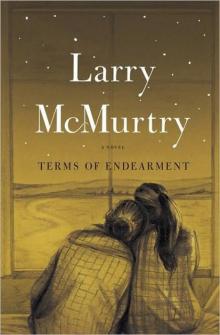 Terms of Endearment
Terms of Endearment Some Can Whistle
Some Can Whistle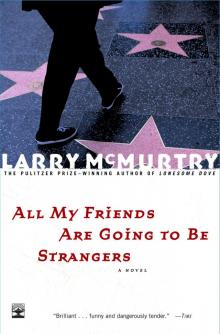 All My Friends Are Going to Be Strangers
All My Friends Are Going to Be Strangers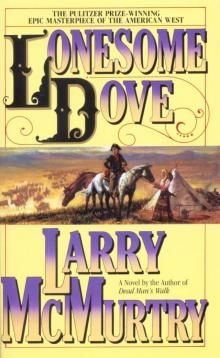 Lonesome Dove
Lonesome Dove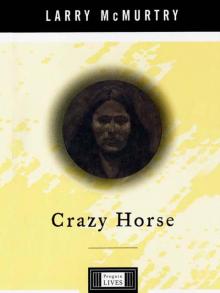 Crazy Horse: A Life
Crazy Horse: A Life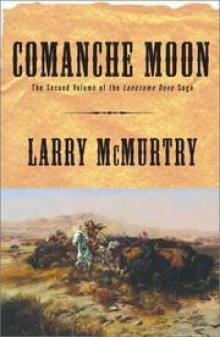 Comanche Moon
Comanche Moon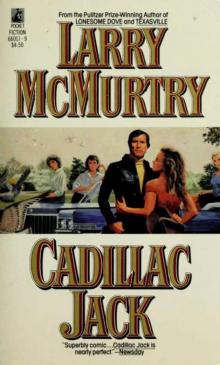 Cadillac Jack
Cadillac Jack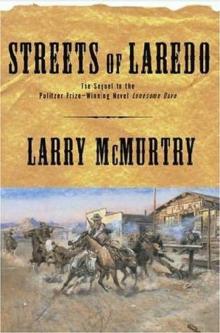 Streets of Laredo
Streets of Laredo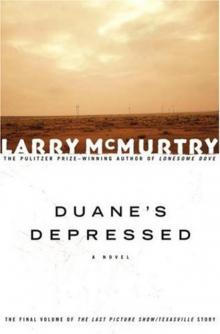 Duane's Depressed
Duane's Depressed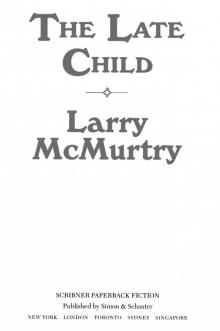 The Late Child
The Late Child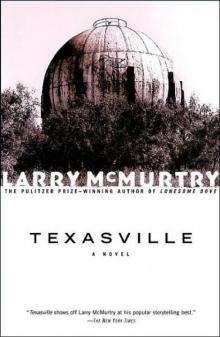 Texasville
Texasville Rhino Ranch
Rhino Ranch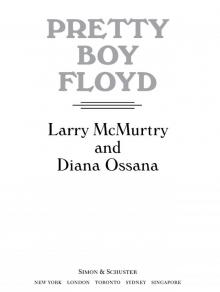 Pretty Boy Floyd
Pretty Boy Floyd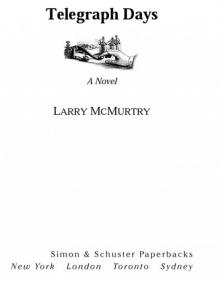 Telegraph Days
Telegraph Days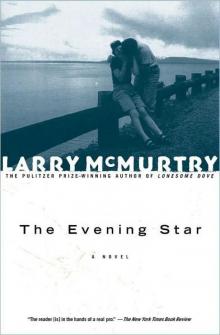 The Evening Star
The Evening Star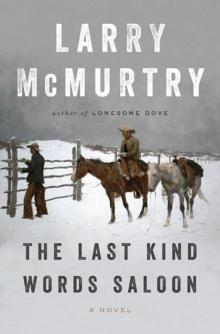 The Last Kind Words Saloon
The Last Kind Words Saloon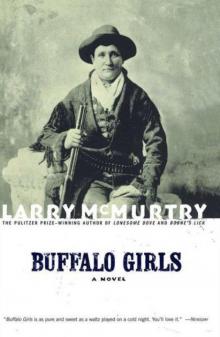 Buffalo Girls
Buffalo Girls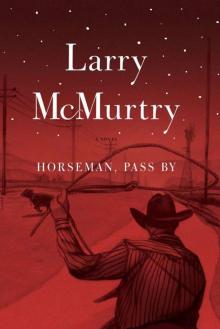 Horseman, Pass By
Horseman, Pass By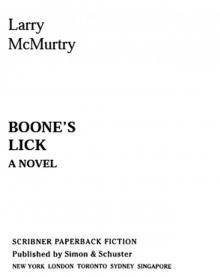 Boone's Lick
Boone's Lick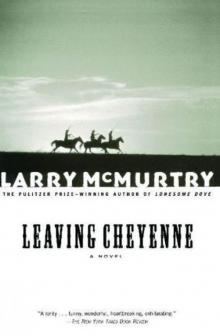 Leaving Cheyenne
Leaving Cheyenne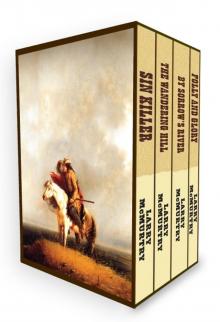 Sin Killer
Sin Killer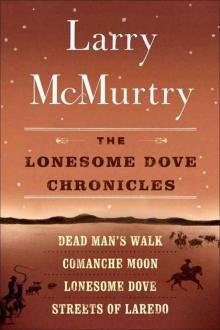 The Lonesome Dove Chronicles (1-4)
The Lonesome Dove Chronicles (1-4)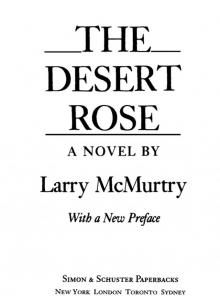 The Desert Rose
The Desert Rose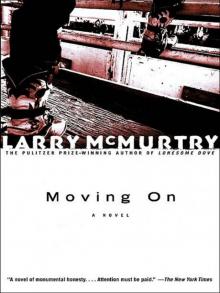 Moving On
Moving On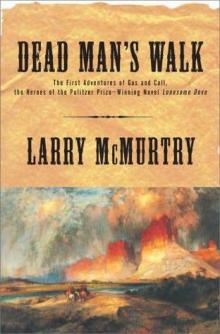 Dead Man's Walk
Dead Man's Walk The Last Picture Show
The Last Picture Show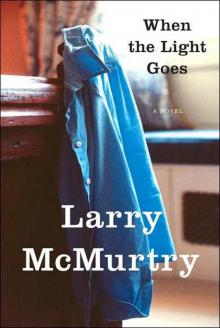 When the Light Goes
When the Light Goes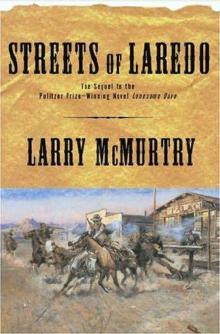 Streets Of Laredo ld-2
Streets Of Laredo ld-2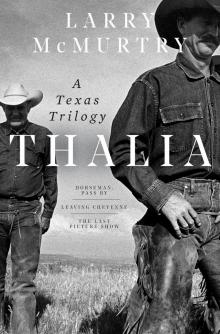 Thalia
Thalia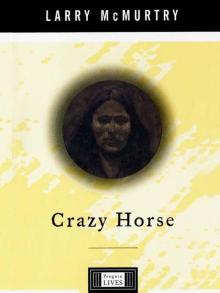 Crazy Horse
Crazy Horse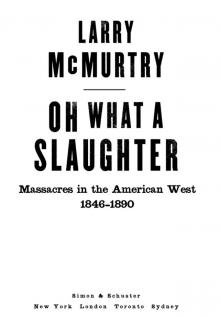 Oh What a Slaughter
Oh What a Slaughter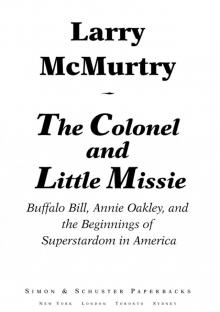 The Colonel and Little Missie
The Colonel and Little Missie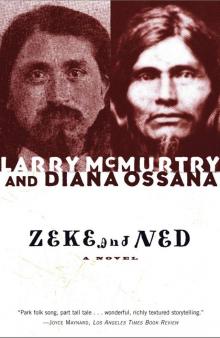 Zeke and Ned
Zeke and Ned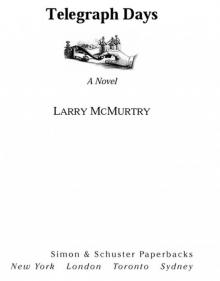 Telegraph Days: A Novel
Telegraph Days: A Novel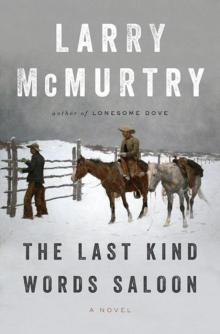 The Last Kind Words Saloon: A Novel
The Last Kind Words Saloon: A Novel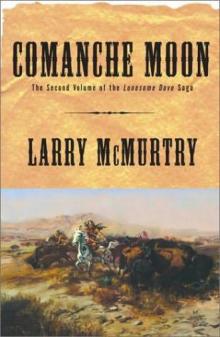 Comanche Moon ld-4
Comanche Moon ld-4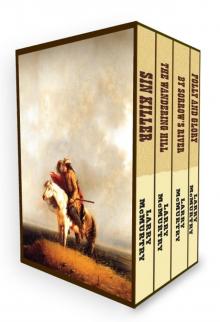 The Berrybender Narratives
The Berrybender Narratives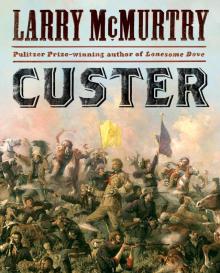 Custer
Custer